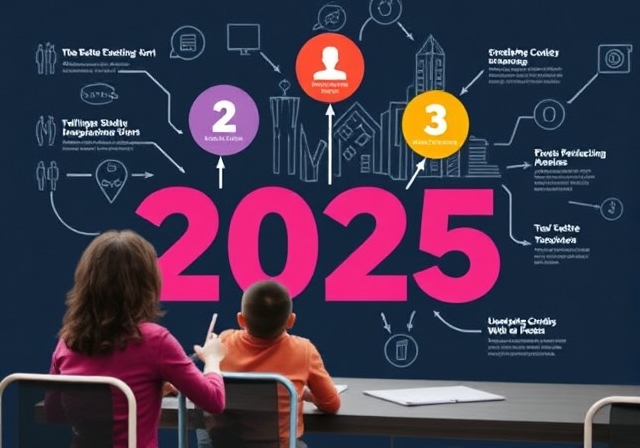Exploring Innovations and Challenges in Modern Classrooms
Key Findings from 2025 Education Studies
The Evolution of Classroom Technology
The Power of Simple Tactics for Student Engagement
Understanding “Inattention Contagion”
Rise and Fall of Cell Phones
Cell phones had a prominent role in education, initially perceived as beneficial tools for learning. However, their increasing distraction led to a decline in classroom usage, as many schools began implementing bans to improve focus and academic performance.
Impact of AI on Learning and Teaching
A 2025 study showed that incorporating easier problems alongside challenging ones significantly motivates students to tackle difficult tasks. Students given simpler questions expressed higher enjoyment and anticipation for solving math problems, emphasizing the impact of strategic task placement on academic success.
Emergence of Large-Language Models
Research involving 180 students revealed how subtle classroom behaviors, like slouching or appearing bored, can disrupt the focus of peers. The findings demonstrate that inattention is contagious, suggesting that teachers need to be proactive in managing classroom dynamics to maintain engagement among all students.
AI’s integration into education shows promise for enhancing learning experiences. Research indicates that while students can achieve high results using AI during practice, they often struggle to retain those skills during assessments, revealing the need for careful implementation of these technologies.
In 2025, large-language models like ChatGPT emerged as significant educational tools, capable of producing human-like text. Particularly in Silicon Valley, these technologies began to transform how students engage with content, yet they face challenges in readiness for independent teaching.
Trends Beyond 2025
As technology continues to evolve, the educational landscape must adapt to integrated AI and other digital innovations. Staying informed on these developments will be crucial for educators seeking to enhance their teaching methods and student engagement.
The Benefits of Outdoor Learning Activities
Limitations of AI in Supporting Learning
A 2025 study emphasized the critical role of outdoor activities in education, linking nature engagement with enhanced creativity and observation skills. Activities like nature journaling allow students to connect with their environment, which promotes mental health and well-being while also offering rich interdisciplinary learning opportunities.
While AI tools like ChatGPT can enhance learning, a study found that students often misuse them, resulting in a decline in their actual skills. Reliance on automated answers impeded learning retention as students performed significantly worse on exams compared to peers who engaged with traditional study methods.
Embracing Mistakes in the Learning Process
Focusing on learning from errors can significantly improve teaching outcomes. A study showed that when students analyzed their mathematical mistakes collaboratively, it led to deeper engagement and understanding, suggesting that a culture of acceptance around errors fosters a more effective learning environment.
Strategies for Effective Classroom Management
Creating a Culture of Engagement
Establishing a classroom culture that values engagement helps students feel invested in their learning process. By employing strategies such as cooperative learning and discussions that highlight student voices, teachers can significantly increase motivation, leading to improved academic outcomes and reduced disruptive behavior.
Using Feedback for Improvement
Consistent feedback is crucial for student development and motivation. By engaging students in discussions about their mistakes and guiding them through corrections, teachers can enhance learning outcomes while fostering a growth mindset in the classroom. This method promotes an environment where errors are seen as learning opportunities rather than failures.
The Role of Peer Pressure
Peer pressure can significantly influence student behavior and academic performance within learning environments. Positive peer dynamics promote accountability and encourage participation, while negative influences can lead to disengagement. Understanding these dynamics enables teachers to structure group activities that harness constructive peer interaction.
Fostering Emotional Connections
Creating strong emotional connections between teachers and students builds a supportive classroom atmosphere. Research shows that classrooms where emotional warmth is present lead to higher self-esteem among students and improved academic performance. Strategies such as personalized learning experiences and social-emotional learning initiatives can forge these essential bonds.


















